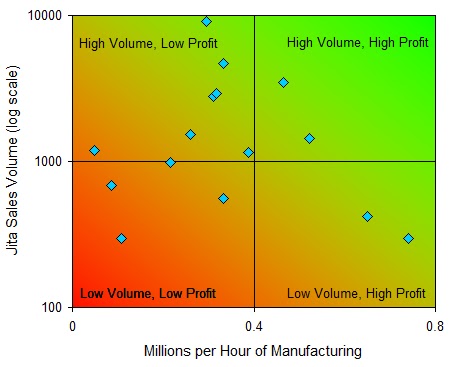Having taken a break from Eve for a while, but now back again, I thought I'd better take a look at how profitable my items are today. When I compared this to how it was 8 months ago, the results make for some quite interesting analysis. I'm going to use the example of Cap Recharger II modules, one of the most traded tech II items.
Despite
technetium prices going through the roof, increasing the prices of construction components (Nanoelectrical Microprocessors and Tesseract Capacitor Units), the launch of PI increasing prices of Superconductors, and the mineral basket increasing,
overall costs have gone up by only 3.7%. There has been a huge decline in the costs of datacores and this has almost entirely offset the increases of all the other materials required. Note: I have included everything except taxes (constant) and the cost of lab jobs ("zero" for me since I use a corp POS but then of course I have fuel bills to pay, not included here, and they have increased drastically).
Not only have costs gone up, but so has the price of the finished product as well. Right now Cap Recharger II's are at a high price, which may not last, but here's the breakdown of the costs versus the sales price anyway:
Up to 62% profit, very nice indeed. The sale price has increased at about 8 times the rate of the price of the cost of materials.
Prices have been quite turbulent over the last 6 months though, as shown on the graph below (thanks to Eve-Tools for the data). Even at the low of 450,000 isk per module, there's still 33% profit margins to be made.
Unfortunately I can't find a good reason for the changes in price. The price decline in November followed a spike in volumes (number of units traded), but otherwise price seems only weakly related to volume.
Regardless, I'm happy. Although I've just analysed Cap Recharger II's here, this seems to be a general trend with the tech II modules I produce (about a dozen different modules) - costs up by a small or moderate amount, but market prices of (most) end products up enough to compensate.








